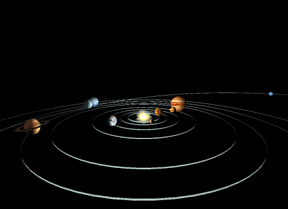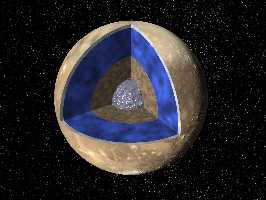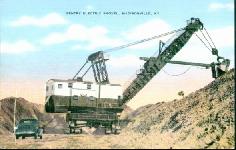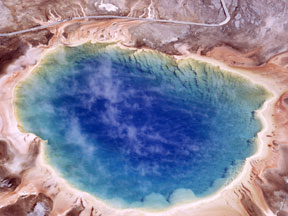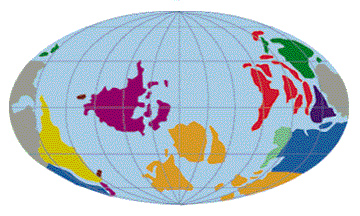
The Archean
The Archean is the name of the age which began with the forming Earth. This period of Earth's history lasted a long time, 2.8 billion years! That is more than half the expected age of the Earth! And no one really can say what went on all that time. Nevertheless, a lot must have happened because Earth changed dramatically and evolved in a way that the neighboring planets did not. By the end of the Archean, the Earth was just beginning to come alive, but Mars was already a frozen ball with no life and no ocean. So many things happened that is it hard to describe everything in one page, so try the Exploratour on The Archean Age, found at the bottom of this page.Here are all the things that happened in this age:
At the beginning of the age, the "birth" of the Earth, at 4.8 BYA (billion years ago) the Sun finished forming, blew away whatever atmosphere the Earth started with, and Earth started over with an atmosphere of hydrogen. Also the Earth
differentiated.
At first temperatures were very hot, so there was no ocean. Igneous rocks dominate the surface of the Earth, and there was a lot of volcanic activity which yielded new molecules for the atmosphere.
As the temperature fell below to about room temperature, liquid water condensed on the surface and created a vast ocean. As soon as water began to form on the surface, carbon and sulfur dioxide from the atmosphere dissolved into the water, removing large quanities of those elements from the atmosphere (this is in contrast to Mars or Jupiter where CO2 and H continue to dominate the atmospheres of those respective planets). Nitrogen began to build up in the atmosphere. Volcanic activity continued to pour forth a
secondary atmosphere for the Earth. Meanwhile the seeds of continents called the "continental shields" began to take shape.
By 3.8 BYA (a billion years later) the first living beings are believed to have been thriving. Some of these creatures, called Archaea, bear the name of the entire age. These beings did not require oxygen to survive, which is good since there was none in the atmosphere at this time. Waste products of sulfur from these living beings began accumulating in the ocean, as well as the products of the weathering of igneous rock such as Fe (iron).
From 3.5 BYA to 2.5 BYA, or roughly to the end of the Archean age, iron ores began to be formed in large amounts at the bottom of the ocean. This is significant because it is proof that oxygen was beginning to be formed by the first living beings. The excess oxygen first combined with excess Fe to form Fe2O3 otherwise known as iron ore. This process took one billion years and finished at the end of the Archean era.





